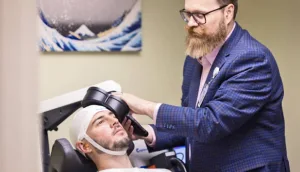Unlocking the Brain’s Secrets: Addiction, Rewards, and Recovery
Stanford Medicine researchers are shedding light on the intricate workings of the brain’s reward system, offering new perspectives on addiction and potential pathways for prevention and treatment. This exploration delves into the ancient wiring that governs our desire for rewards and how it can be exploited, leading to addictive behaviors.
The Ancient Wiring of Reward
Our brains are wired to seek pleasure and avoid pain. This fundamental drive is crucial for survival, motivating us to pursue essential needs like food, water, and social connection. However, this very system can be hijacked by substances or behaviors that trigger an excessive release of dopamine, the brain’s primary reward chemical.
- Dopamine’s Role: Dopamine acts as a signal, reinforcing behaviors that lead to positive outcomes.
- Evolutionary Roots: This reward system is deeply rooted in our evolutionary history, ensuring our ancestors’ survival.
The Hijacking of the Reward System
Addictive substances and behaviors can overwhelm the brain’s natural reward circuitry, leading to a cycle of craving and dependence. Over time, the brain adapts to this excessive stimulation, requiring more of the substance or behavior to achieve the same level of pleasure. This can result in a diminished ability to experience pleasure from natural rewards, further fueling the addiction.
How Addiction Takes Hold:
- Tolerance: The brain requires increasing amounts of the substance to achieve the desired effect.
- Withdrawal: Unpleasant symptoms occur when the substance is discontinued.
- Compulsive Behavior: The individual engages in the behavior despite negative consequences.
Preventing and Treating Addiction
Understanding the brain’s reward system is crucial for developing effective strategies for preventing and treating addiction. These strategies may include:
- Education and Awareness: Providing information about the risks of addiction and the impact on the brain.
- Early Intervention: Identifying and addressing risk factors for addiction in adolescents and young adults.
- Therapy and Counseling: Helping individuals develop coping mechanisms and strategies for managing cravings.
- Medication: Using medications to reduce cravings, block the effects of addictive substances, or manage withdrawal symptoms.
Final Words
By unraveling the complexities of the brain’s reward system, researchers are paving the way for more effective interventions to prevent and treat addiction. A comprehensive approach that combines education, early intervention, therapy, and medication holds the greatest promise for helping individuals overcome addiction and reclaim their lives.




+ There are no comments
Add yours